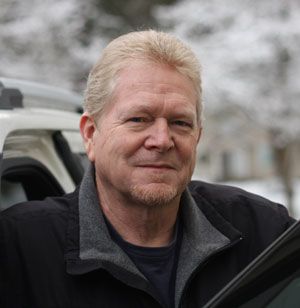Even small peeves matter
We all see driving behaviors that appear unnecessary, unsafe or downright illegal. Repeated sightings of these acts cause them to be labeled “pet peeves.” I’ve often written of mine, and reader R.S. has some of his own.
The first gripe R.S. relayed to me is one of my old “favorites.” He explained and wondered, “First, why is it that so many drivers making a right-hand (or even left-hand) turn feel it necessary to swing wide into the adjoining lane to begin their turn? Whether signaling or not, the unexpected and completely unnecessary opposite move into the next lane invites a sideswipe. I am not speaking about a vehicle with a long wheelbase or trailer(s), but the average automobile. This is not where one is turning into a narrow driveway, either, but where one is making a routine turn into an intersecting street or business entry.”
I’ve written and wondered about this tendency also. Experiencing the event is usually just shocking, but occasionally requires an evasive maneuver to avoid contact. I’m unsure why some drivers apply “big rig” turning procedures to normal-sized vehicles, but maybe they are overcompensating for previous misjudgments that caused right rear tire “curb hop.”
R.S described another unsafe peeve, writing, “Second, in several instances/locations, I have experienced repeated and selfish/unsafe violations of the center turning lanes. If there is a distant left-turn pocket, some feel it okay to use this turning lane as their private passing lane. They pass everyone who is slowed or stopped in order to get ahead to the left-turn pocket.”
Washington law (RCW 46.61.290) allows use of center left turn lanes for a maximum distance of 300 feet, and disallows its use for the purpose of overtaking or passing another vehicle proceeding in the same direction.
R.S. admitted, “While I have not yet seen a vehicle move into the opening of the left-turn pocket and get struck by an unexpected, overtaking vehicle in the center turning lane, it seems like it only is a matter of time.”
And then he described a real-world example demonstrating defiance of the governing law, noting, “The worst/most selfish offense, however, has been twice where someone decided that traffic was moving too slow on Indian Trail Rd. going toward/away from Pacific Park and simply moved into the long center island/turning lane to speed past everyone else.”
Lastly, R.S. is perplexed by the inconsistent signage regarding U-turns along busy Spokane arterials. Regarding Division Street, he wondered, “Why is there not some consistent signage along this congested corridor?”
While signage placement may be ambiguous, Washington law basically allows U-turns where they are not posted as forbidden. RCW 46.61.295 specifies: The driver of any vehicle shall not turn such vehicle so as to proceed in the opposite direction unless such movement can be made in safety and without interfering with other traffic. And further, no vehicle shall be turned so as to proceed in the opposite direction upon any curve, or upon the approach to or near the crest of a grade, where such vehicle cannot be seen by the driver of any other vehicle approaching from either direction within five hundred feet.
Additionally, Spokane Municipal code forbids U-turns within the boundaries of certain “congested zones.”
As R.S. observes, “I guess you just have to always expect the unexpected...and fear not, for some time, somewhere, you will be rewarded.”
Readers may contact Bill Love via e-mail at precisiondriving@spokesman.com.
